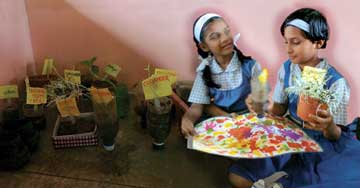Gunvant Jain
Some of the best teaching approaches like Constructivist Theory and Learning by Doing are based on a relatively unknown and grossly underestimated concept, Nai Talim – The Gandhian Way of Teaching. It seems pretty distressing when such a comparison is made, but the underlying philosophy is still the same – cultural knowledge and hands-on experience is crucial for education.
This philosophy constitutes the core of my teaching methodology adopted for teaching science to my school kids in my second year of Fellowship at Teach for India.

Aim
Children should be able to appreciate the cause and effect of rain on both local and global scenarios. Measure and tabulate the observations, draw inferences and discuss local and global issues.
Normally, children in the primary section do not absorb abstract concepts easily, if at all. Thus, there arises the requirement of working around their natural tendency to explore, observe, and discuss new things to introduce concepts. So, our rain unit starts with activity. It involves stepping out of the classroom, observing – listing and drawing – the world and environment of living and non-living things around them. This is then followed by a discussion. If you are lucky enough, children will be smart to say “Bhaiya, in rain so many new plants and insects come… Where do they go after rainy season? Why they come only in rainy season?”
The author is currently a Teach for India Fellow and holds a degree in B.Tech from IIT, Chennai. He teaches Grade 4 at Lt. Shantabai Ladkat English Medium School, Pune. He can be reached at gunvant.jain2010@teachforindia.org.
